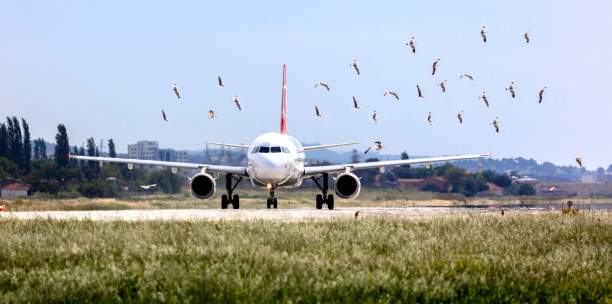Regularly, airports are confronted with the difficulty of dealing with bird strikes.
When a bird strikes a smaller plane, the engines, windscreens, and even the plane’s structural integrity might take a beating. If birds get into the engine of a large aircraft, it can cause problems, such as a lack of control in extreme circumstances.
Problems Caused by Bird Strikes
For many miles around, airports serve as the only undeveloped land found in densely populated places like cities. The constant droning of planes above also discourages many attackers from the area, making it simpler for birds to raise their young. In addition, many airports are located near wetlands that absorb the noise, making the place a natural draw for birds.
Airports must take every precaution for airport bird mitigation to avoid collisions with birds, posing a significant threat to airplanes. Here’s a look at how airports deal with the threat of birds crashing into planes.
- Adopting a New Lifestyle
One-way airports try to reduce the possibility of a strike is by altering the surrounding environment. As a result of this strategy, bird populations are expected to disperse in search of better breeding grounds elsewhere.
Suppose you want to prevent birds from landing at your airport and causing damage to your property. In that case, you’ll need to remove food supplies, cover surrounding water sources, and maintain vegetation as short as possible. It’s also possible to disrupt the ecosystem by using lasers and other innovative devices.
- Flight Adjustments and Manual Surveillance
In the past, skilled bird spotters have been deployed at airports to identify and track birds that pose a threat. Spotters are typically armed with binoculars and are responsible for spotting birds, alerting them to aircrews, altering flight routes, and spreading them before they contact any airplane.
- Tracking Birds using a Radar Detection ?
airport bird mitigation can be improved by using avian detection radar. Bird detection radar, as opposed to manual observation, is always on, so no matter the condition, you can be sure you’re getting the most accurate results. Additional information and statistics on flight paths and migratory routes provide airports with a better understanding of bird behaviour patterns.
- Bird strikes can be reduced by reducing the risk
Airports need the same standardized, real-time bird mitigation devices to prevent bird strikes because the danger is here to stay. Many are constrained by the inconsistencies of bird spotters, the absence of coverage at all day hours, and the restricted extent of the airport.
There is a growing risk of birds striking planes as airports get more crowded and flights increase frequency. Bird strikes are a serious threat, and airports must be attentive in their efforts to prevent and reduce them using bird mitigation devices.
